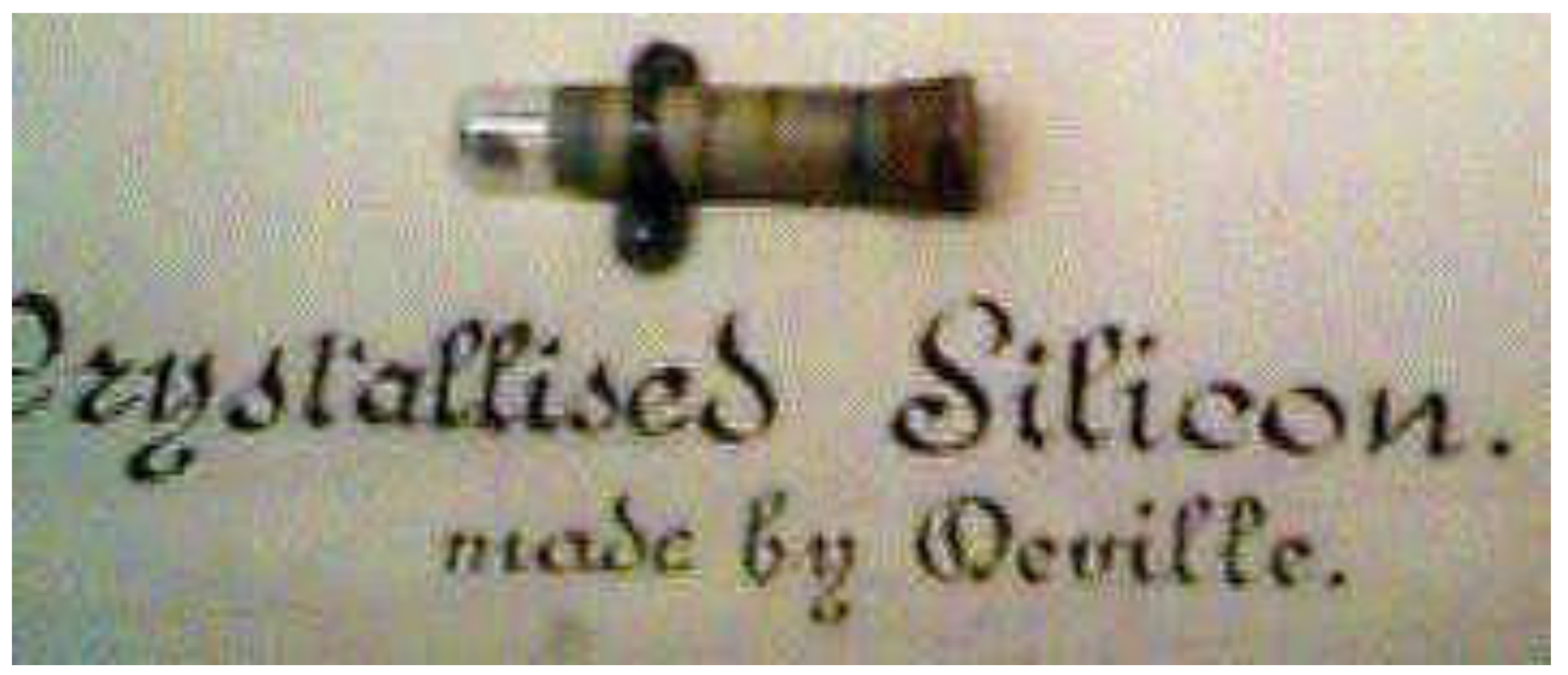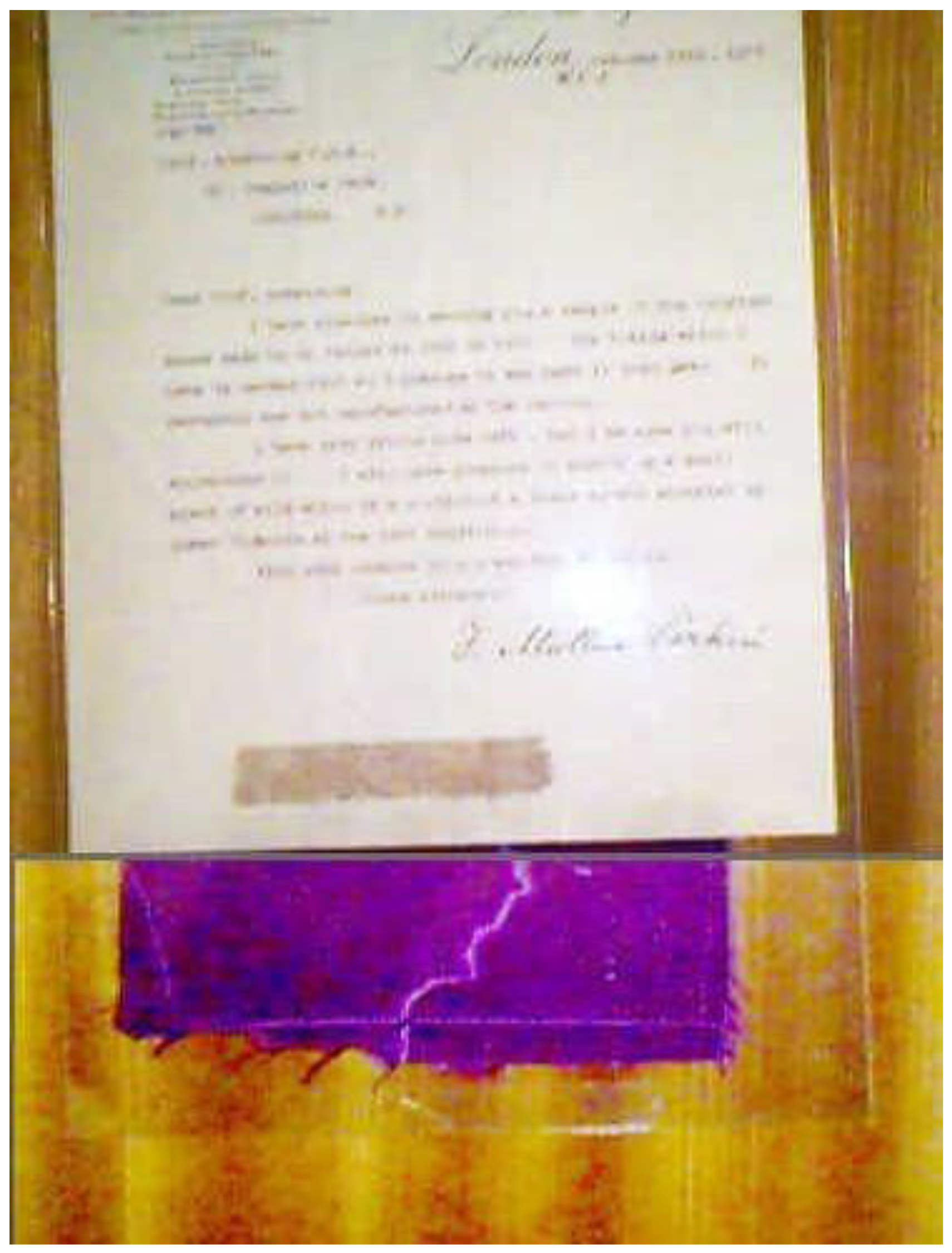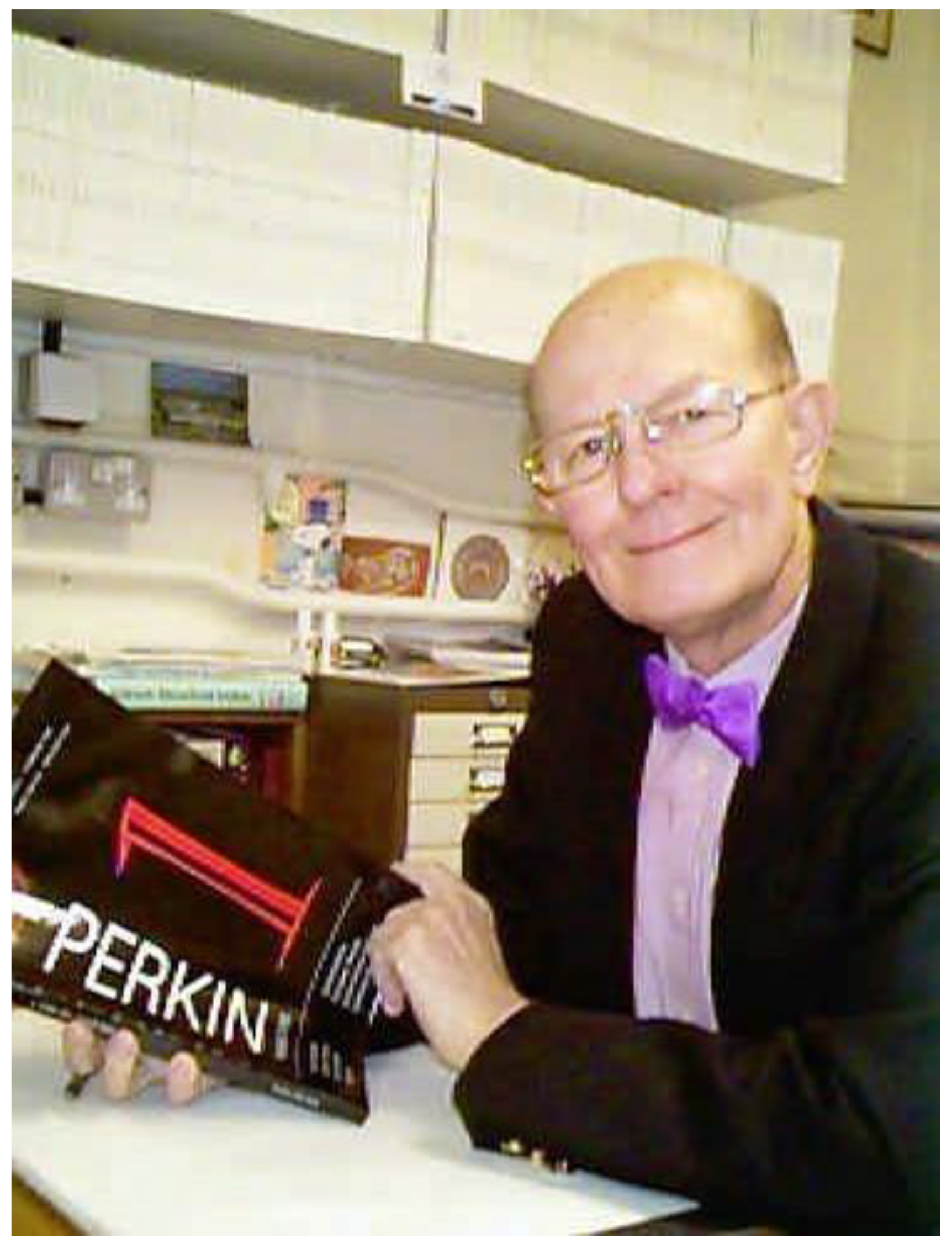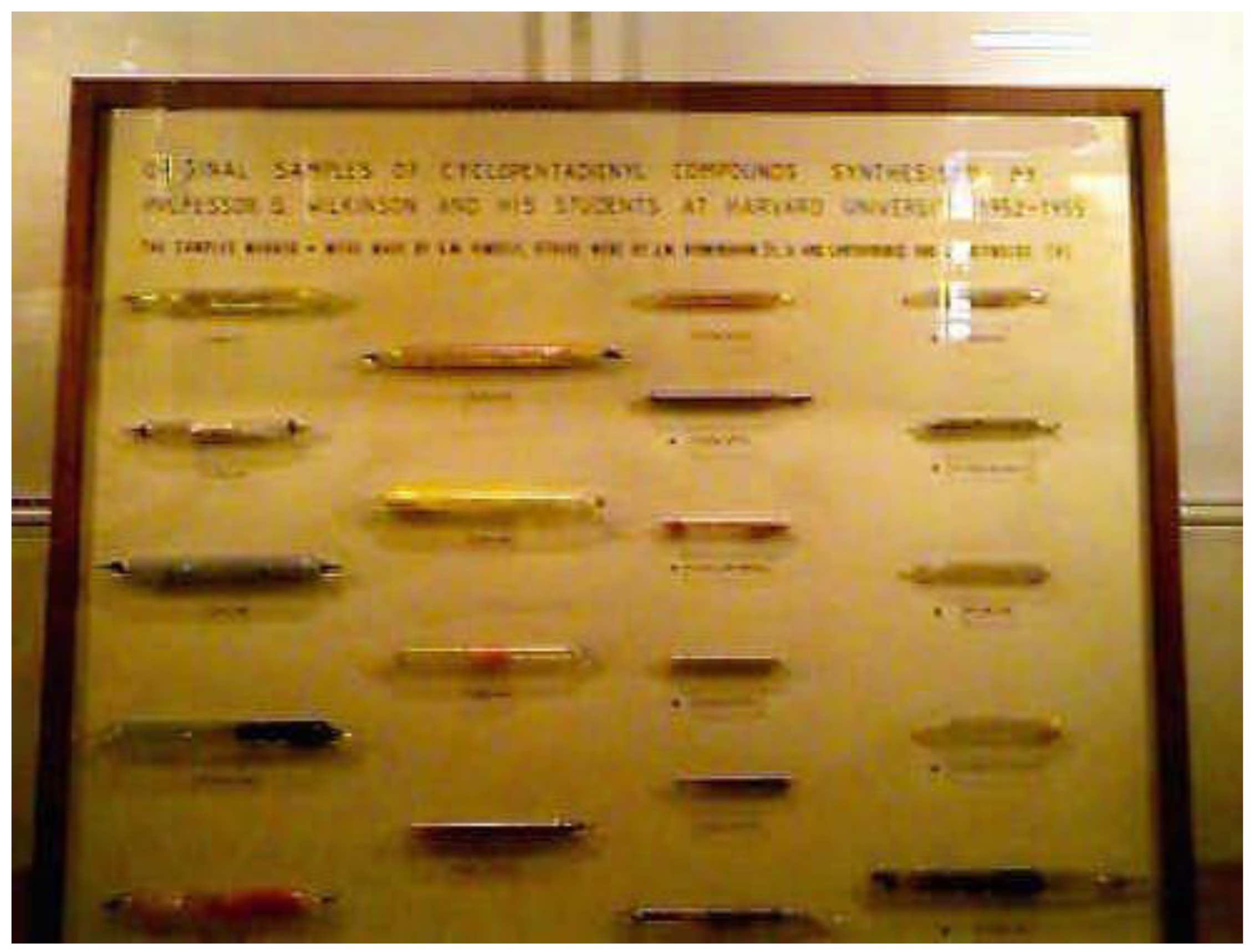Introduction
Much like musical heritage, molecular heritage comes in two parts; a set of instructions on how molecules can be prepared, and an actual sample created by an individual or group. The analogy may also extend in another sense; most of the new molecules described in the scientific literature have probably only been prepared once, by their original discoverers. Of the 18 million or so molecules whose preparation has been described, relatively few probably exist as physical specimens at any given moment in time. Curiously however, unlike artistic heritage, the chemical community has often placed relatively little importance on the preservation of original chemical specimens and the actual samples prepared by their discoverers. Often, any specimens that have been preserved remain un-indexed and probably obscurely stored. It was of some interest therefore to discover what the preserved chemical heritage was of Imperial College, the origins of which date back to the middle of the 19th century.
My own personal interest in the departmental chemical and molecular heritage dates back some 30 years, when as a prospective entrant to the undergraduate course at Imperial College, I was invited for an interview. During the time waiting for my interview, I was left to enjoy the pleasures of the main lecture theatre, a magnificent building constructed around 1906 and demolished in 1996. At the rear, I discovered a display case containing specimens that dated back to the early 1800s. That memory has stayed with me, despite the fact that by the time I actually become a student at Imperial College, the specimens I recollected seeing were no longer on display. As it turned out, I was not to find them again for 30 years. My re-discovery of these recently in turn triggered an urge to share their background with others. Thus was born,
http://www.ch.ic.ac.uk/heritage/ Along with this Web page came the realisation that the Internet could form an ideal mechanism for linking institutions with interesting chemical heritages. Organisations such as the Chemical Heritage Foundation [
1] are also beginning to assume such a role on a global scale.
The Internet also offers the possibility of enhancing molecular information in a "hyperactive" manner [
2]. This is very much in the style of the "molecules of the month" [
3]. For the molecular heritage collection below, three dimensional molecule (or crystallographic unit cell) information has been hyper linked to the photographs in a form which can be displayed by
e.g. the Chime browser plug-in from MDL Information Systems [
4]. The entries that follow represent a February 1998 snapshot of a collection that continues to grow. The author expresses the hope that others may be persuaded to similarly document their own institutional molecular heritage.
Elemental Heritage
Whilst the vast majority of the 18 million or so chemical compounds known to science in 1998 were discovered in the 20th century, most of the natural elements themselves were in fact isolated in their elemental form in the 19th century. It is not known exactly how many original samples of the 80 or so non- radioactive elements that can be placed in a sample tube are still extant. The entries below relate to those elements that exist either at Imperial College, or at the nearby Royal Institution of Great Britain [
5]. The author welcomes information on the existence of any other original elemental samples prepared by their discoverer.
The Imperial College archives contain a sample of elemental potassium which is still in a beautifully lustrous condition (
Figure 1). The date of this sample has not been firmly established, although the label dates from the period around 1881. Potassium was originally isolated as an element by Sir Humphry Davy in 1807, and Davy’s original samples of metallic sodium (1807), magnesium (1808), barium (1808) and calcium (1808) still exist on display at the Royal Institution of Great Britain. Davy also first isolated metallic lithium, but it is not known if a sample still exists. Samples of the other alkali metals (Rb, Cs) are suspected to exist in Heidelberg (Germany) where the discoverers Robert Bunsen and Gustav Kirchhoff worked. The Science Museum, London, located just to the south of the modern chemistry department at Imperial College, also has various samples made by Bunsen, inert gases isolated by William Ramsay in 1894 (probably diffused out by now!), platinum made by Wollaston, and a large collection of molecular samples.
Sir Humphry Davy and his assistant and then successor Michael Faraday worked at the Royal Institution during the first half of the 19th century. During this period many interesting chemical samples were prepared, or acquired from other scientists. Davy was the first to show that chlorine was elemental in 1810, and a sample of his is on display at the Royal Institution. Some of the specimens acquired by Faraday are now part of the Royal College of Science collection at Imperial College. These include a sample of Bromine (
Figure 2), isolated and identified as a new element in 1826 by Antoine Balard.
One of the odder compounds formed by bromine is the complex resulting from reacting it with the simple tertiary base DABCO in the presence of dichloromethane and atmospheric oxygen [
6]. The bromine takes the form of linear chains of Br
73- ions, the mystery being why a species with three negative charges does not simply dissociate to Br
-, and 2 Br
3- ions. Complex products formed by reactions of simple bases are characteristic of Mauveine and Sscorpionine as well (see below).
The author would like to hear whether any original sample of Iodine made by Bernard Courtois in 1811 still exists. Given the reactivity of fluorine, it seems improbable that any sample deriving from Henri Moisson (1886) has survived.
The Faraday collection also includes an original sample of crystalline silicon prepared for the first time by H. St. C. Deville in 1854 by the action of SiCl4 over molten aluminium (
Figure 3). Crystalline silicon of course underpins the world’s computer industry, and is arguably the most industrially important element, more so than even gold and diamond, and much more useful!
The Royal College of Chemistry (now named the Royal College of Science) was founded in 1845, and its first director was August von Hofmann. A famous early student of the College was William Crookes, who is credited with the discovery of the element thallium in 1861 (and, concurrently with C. A. Lamy its isolation as a metal in 1862). Crookes' discovery was the first of an element by an English chemist since Davy’s preparations of the alkali metals. Samples of thallium metal along with numerous compounds of thallium made by Crookes are on display at the Royal Institution of Great Britain and the Science Museum, London.
Molecular Heritage
Another famous student of the Royal College of Chemistry was William Perkin, who in 1856 discovered a brilliantly coloured substance which became known as mauveine, and which belongs to a class of substances known as heterocyclic molecules. Mauveine was the subject of the first "molecule-of-the-month" article in December 1995 [
7]. A piece of silk dyed with an original batch of mauveine prepared by Perkin himself is attached to the bottom of a letter written in 1922 by William Perkin’s son to Henry Armstrong, a Professor at the by then named Royal College of Science (
Figure 4). This silk is part of a batch that originally was made into a dress for Queen Victoria. Perkin went on to found a factory in Greenford, West London, to manufacture mauveine. Arguably, this site represents one of the first sources of the modern organic fine-chemical manufacturing and pharmaceutical industry, and which therefore can be argued to rank in importance with the original industrial revolution, which had occurred at Ironbridge in the midlands of England in the early 1700s.
Perkin was also associated with the early Chemical Society of Great Britain, now known as The Royal Society of Chemistry. A past president of the Royal Society of Chemistry is Charles Rees, who is also the current Hofmann Professor of Chemistry at Imperial College Chemistry Department (the direct successor to the founder August von Hofmann). A characteristic bow tie dyed with an original sample of mauveine was presented to Professor Rees by Professor Otto Meth-Cohn, who had recently corrected the molecular structure of mauveine (appropriately enough reporting the result in the journal named after Perkin) [
8]. The photograph (
Figure 5) shows Professor Rees holding the February 1998 issue of this journal. The molecule linked to the photograph is Scorpionine, which like mauveine is another complex and deeply coloured heterocyclic system made in a single step from a simple base, this time recently discovered by Professor Rees himself [
9].
Hofmann’s successor at the Royal College of Chemistry was Sir Edward Frankland, who was a pioneer of the then new field of organometallic chemistry. Continuing the tradition at the Royal College of Science was Nobel Laureate Geoffrey Wilkinson, who discovered the remarkable structure of ferrocene and who was Sir Edward Frankland Professor at Imperial College from the 1950s until his death in 1996. Original samples of various metallocenes made by Geoffrey Wilkinson and his students during 1952-55, including ferrocene, are still on display in the modern department.
Conclusions
A surprising number of elemental and molecular chemical samples from the 19th century still exist, although their existence is not always widely known. This article (at least in its active Web-based form rather than its printed version) attempts to show how this heritage can be documented in a novel and global manner. Perhaps by this mechanism, other hitherto unknown samples might be brought to light, in a celebration of more than two hundred years of chemical heritage.









